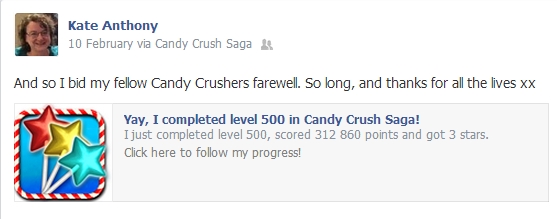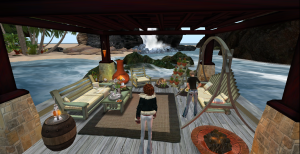I’ve posted about trolling before when I returned from a conference – and feel inspired to do so again having returned from another! I went to a colleague’s workshop on CyberTrauma recently, and spent a very enjoyable day with counsellors, teachers, and other people with an interest in e-safety when it comes to working with children. One of the most interesting debates was around trolling, and how this can be misunderstood in the context of the Internet as a result of media attention that aims to highlight the negative behaviours online that we encounter.
Here’s how I see it: it’s all down to the intention of the poster.
Cyberbullying is not trolling. Nor are flames or flamewars. Nor is downright online abuse of another human being or beings online when done anonymously through a public forum such as Twitter. I do feel that the recent legal moves towards prosecution of those who engage in online abuse is a good thing, as I do feel that this addresses the incongruent gap between what is “real” abuse and what is “unreal” (as in: “it’s virtual so it doesn’t exist” – a phrase that has haunted my career when looking at the validity of online relationships, and which inspired one of my favourite self-penned articles back in 2001).
But trolling itself need not be abusive. It certainly can be irritating, frustrating, annoying, and create hours of time spent moderating forum posts, tweets, and blog comments when time could be better spent on something else. And it is true to say that it can often be abusive in nature and appear insulting (at best). But while trolling can be abusive, that does not mean that that is the central aim of trolling behaviour. The central aim of trolling is to lead the audience away from the intention of the initial poster. It’s a smoke and mirrors exercise to draw attention to a new topic – one that is seemingly related but in effect creates a different conversation, ensuring the original point-of-vi ew is lost. Take away the insults, threats, verbal abuse and (usually) bad spelling/use of caps and what you can see is an artform. Done well, trolling is actually quite clever. And a lot of the time, it’s actually quite funny (remember Rickrolling? That’s a classic example of trolling).
ew is lost. Take away the insults, threats, verbal abuse and (usually) bad spelling/use of caps and what you can see is an artform. Done well, trolling is actually quite clever. And a lot of the time, it’s actually quite funny (remember Rickrolling? That’s a classic example of trolling).
There are plenty of lists of the top examples of trolling over the last 25 years online, and plenty of articles discussing it (here’s a good simple one from Urban75). I’m finding that within my work conversations it’s getting increasingly hard to distinguish between good old trolling and internet abuse, and that makes life difficult when training and offering informed opinion about how society could or should treats trolls, particularly within the field of mental health.
In the past few years the phrase “don’t feed the trolls” became a meme in itself – and when re-dressed as “don’t feed the online abusers” it makes perfect sense (although that attitude has changed in light of online abuse being (rightly) taken as a criminal matter rather than simply an annoyance).
But let’s be clearer in our definitions of what is trolling and what is online abuse – it’s going to make addressing mental health issues caused or exacerbated by types of online behaviour WAY easier.
🙂



 beautiful island, we have been virtually homeless for around six months, both of us feeling out-of-sorts and ungrounded within an important part of our work – the virtual world. If you have ever been homeless, as I have, you will know exactly what I mean. And if you haven’t, I promise you it’s not exactly a bundle of fun emotionally (quite apart from practically, of course).
beautiful island, we have been virtually homeless for around six months, both of us feeling out-of-sorts and ungrounded within an important part of our work – the virtual world. If you have ever been homeless, as I have, you will know exactly what I mean. And if you haven’t, I promise you it’s not exactly a bundle of fun emotionally (quite apart from practically, of course).